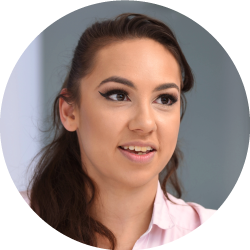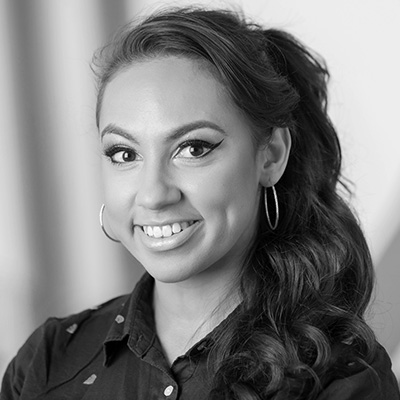Women and maths: “I’ve gained so much confidence and resilience by going into this subject.”
UK government social mobility adviser and secondary school headteacher Katharine Birbalsingh recently caused a stir by suggesting that girls choose not to do physics at A-level because “There’s a lot of hard maths in there…”
Here, three of our consultants share a very different outlook on science, technology, engineering, and maths (STEM).

Jayna Jogia
Product Development Engineer
MEng, Mechanical engineering
International baccalaureate: high-level maths, physics, history

Jessica Platt
Associate Insights Researcher
MA, Social Anthropology
A-levels: biology, chemistry, English literature

Sukie Whitehall
Consultant Mechanical Engineer
MSc, Advanced Mechanical Engineering
A-levels: physics, maths, chemistry
When did you first realize you had a passion for maths?
Jayna – The first time it occurred to me I was good at maths was when I was 11 and came top in a class Olympiad. Until then, maths was just a thing I could do and enjoyed. I always had encouraging maths and physics teachers, and doing maths was the norm in my household. My dad was an engineer and my first maths teacher. You often hear of female mechanical engineers who have been inspired by a direct relative to take up the subject. Outreach at schools is essential to encourage children who don’t have that.
Sukie – I studied maths, physics, and chemistry at A-level. I’m a very logical person, and I loved that you could walk out of a maths exam knowing an exact score. Working things out rather than relying on memorized facts made me feel clever and gain confidence.
Jessica – I was always celebrated for English – my head was always in a book, and adults would praise me for being ‘good’ at English – but I was also fascinated by science. I was obsessed with black holes. I studied A-level chemistry, biology, maths, and English literature.
Did you face any challenges or prejudices studying STEM?
Sukie – There were very few female toilets on my degree course, and I lived my life running across the campus to the law building. Things like that make you lose your feeling of belonging.
Jessica – When I had to take a month off A-levels with pneumonia, I asked my maths teacher what I should do to catch up. They said there was no point in carrying on because the highest grade I was expected to get was a B which they didn’t deem worth pursuing. I didn’t have the confidence to protest. I’m now working in technology, but I got there by a different route.
Sukie – If I asked my tutors for help, they told me that a topic was ‘difficult to get’ and to move on. My female best friend and I were sure that our male counterparts weren’t getting the same brush-off, so we used to send her boyfriend to ask our questions for us.
What would you say to encourage younger women to get into STEM?
Jessica – The comment that sparked this discussion was about girls not choosing to do physics. Dropping maths A-level wasn’t a choice for me; it was taken out of my reach. So, I’d say: “Don’t let anyone tell you that you can’t do maths or that it’s too hard. Make an empowered choice about what aligns with your vision, dreams, and values.”
Sukie – I’ve gained so much confidence and resilience by going into these subjects. Also, just because you’re good at one subject doesn’t mean you’re bad at another. Because I was good at maths, I became convinced I wasn’t good at languages (in fact, I was getting As). The same applies the other way round.
Jayna – Even if girls are daunted by maths (which we’re not sure is true), that shouldn’t put them off. Why shouldn’t you rise to the challenge? Whatever path you take, you’ll get to a point that’s hard, but that’s not a reason to quit. At CDP, we invite complex problems. They can be exciting, interesting, and worth solving; sometimes, they’ve never existed before. Then, we get all the fun of exploring and creating solutions. I spend all day inventing healthcare products; it’s hugely rewarding.
What do you enjoy most about using maths and physics at CDP?
Jessica – I’m passionate about telling the stories that emerge from large datasets. When we run quantitative research projects, I use maths, particularly statistics, to understand what we’ve found and communicate that to my audience.
Jayna – Physics isn’t merely a classroom subject; it’s a perspective. It’s a way of understanding the world around us: how things interact in a system; how to see something on an atomic scale and a galactic scale; how to define assumptions to draw conclusions. This approach is instrumental in my work. Recently, I’ve been looking at how to make a product more sustainable without compromising its performance. I’m doing this by evaluating how material changes affect strength, flexibility, wear, interaction forces, and manufacturing. Then I can see how the product could be redesigned to incorporate that material. I couldn’t do this without Newton’s Laws, which I learned in high school!
Women in STEM
Not adding up
The percentage of female students taking physics A-level has hovered at around 23% for the last four years. Meanwhile, the percentage taking maths has stayed at approximately 39%.
Balancing the equation
There are several initiatives in the public and private sectors to encourage girls and women to pursue STEM. Here are just a few examples:
Every February 11, the UN celebrates International Day of Women and Girls in Science.
The UK Mathematics Trust runs a Mathematical Olympiad for Girls to encourage them to tackle advanced problems.
The AAUW (American Association of University Women) advocates for gender equity for women, through research, education, and advocacy. It provides research and teaching materials to encourage girls into STEM.
Stemettes is an award-winning social enterprise working to inspire and support young (from five to 25 years old) women and non-binary people in STEM careers.
In January 2022, the UK Foreign Secretary and Equalities Minister launched a task force to boost the representation of women in STEM jobs. One of its objectives will be to establish whether to introduce targets to increase the percentage of women in STEM jobs.

Jayna Jogia
Product Development Engineer

Jessica Platt
Associate Insights Researcher

Sukie Whitehall
Consultant Mechanical Engineer